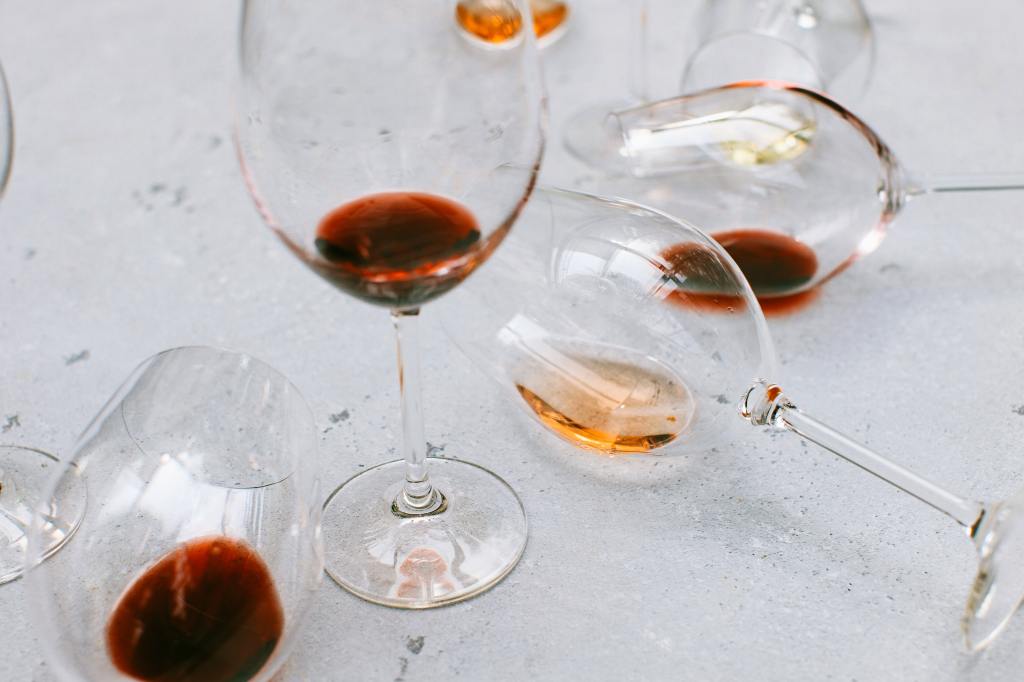Everyone knows that wine is broadly categorized into two types: red and white. But do you know the differences between them? What are red and white wine differences? Why is there such a significant colour variation?
Before taking classes, I only knew I was drinking wine, without paying much attention to its production and differences. But after gaining an understanding, I learned why such styles emerge. It was the WSET course that truly taught me that understanding wine requires systematic learning, studying numerous theories, especially the winemaking process.

Here’s the translation of the differences between red and white wines:
- Variety
- Aromas
- Wine Making
- Colour
- Food Paring
1. Variety

Here is top 5 Important International Red Grape Varieties:
- Cabernet Sauvignon
- Merlot
- Pinot Noir
- Malbec
- Syrah
For wine beginners, getting to know these five red grape varieties is sufficient. Recognizing these few in a restaurant for wine selection is adequate because they are most commonly found on wine menus and in supermarkets.
Famous Origins:
Cabernet Sauvignon: France, Bordeaux’s West Bank (usually blended with Merlot) / United States, Napa
Merlot: France, Bordeaux’s East Bank / Italy / United States / Chile
Pinot Noir: France, Burgundy (home to the world’s top and most expensive wines) / New Zealand (known for its clean and fresh quality) / United States, California
Malbec: Argentina / South France
Syrah: France, Northern Rhône / Australia / Chile / South Africa
Top 5 Important International White Grape Varieties:
Chardonnay Sauvignon Blanc Riesling Pinot Gris Muscat
Famous Origins:
Chardonnay: The most widely planted grape variety worldwide, found in Burgundy, France (in cooler areas) / Australia
Sauvignon Blanc: France, Bordeaux, Loire River
Riesling: Germany Pinot Gris: Italy
Muscat: France, Alsace / Italy
Understanding important wine-producing regions and grape variety pairings is generally sufficient.
2. Aromas
Wine is divided into three levels / tiers:
- Primary: The first level of aroma – Fruit aroma (the inherent taste of the wine) / Herbal aroma
- Secondary: The second level of aroma – Aroma from the fermentation process
- Tertiary: The third level of aroma – Aroma developed after aging in oak barrels
Red wine
- Primary Aromas: Strawberry, Plum, Plum, Cherry, Cranberry, Blueberry, Blackberry / Cedar, Rose
- Secondary Aromas: Vanilla, Clove, Toast, Bread, Spice, Biscuit, Oak, Cheese, Butter, Coffee, Chocolate, Coconut Milk
- Tertiary Aromas: Coffee, Tea leaves, Leather, Mushroom, Stable, Tobacco, Cigar, Chocolate, Soil, Damp Leaves, Meaty notes
White wine
- Primary Aromas: Citrus (Lemon, Orange), Tropical Fruits (Pineapple, Passion Fruit, Banana, Mango) / White Flowers (Lily, Jasmine)
- Secondary Aromas: Vanilla, Clove, Toast, Bread, Spice, Biscuit, Oak, Cheese, Butter, Coffee, Chocolate, Coconut Milk
- Tertiary Aromas: Dried Apricot, Honey, Ginger, Toast, Gasoline, Nuts, Apple Core
3. Wine Making
Red wine making process

White wine making process

The most significant difference in the winemaking process is that white wine involves pressing the juice before fermentation. However, for red wine, the grapes, including the skins and seeds, are all directly put into the fermentation vat. This process aims to extract the tannins.
4. Colour
Red wine colour
Red wine coloration evolves from young to mature, yet the hues can vary depending on the grape variety. In its youth, red wine may display shades of purple or red. As it progresses, it transitions to a mid-stage ruby color, finally developing into a deeper, coffee-like hue as it matures.
White wine colour
In its youth, white wine often presents a pale greenish hue, gradually transitioning to a colour resembling light coffee as it matures.
5. Food Paring

The difference in food pairing between red and white wines is indeed crucial. People often said:
“Red meat with red wine, white meat with white wine”
However, the grape variety and the sauce used need to be considered.
For example:
Pinot Noir can be paired with seafood because of its lower tannin content.
White wines like Chardonnay, Semillon, among others, can also be paired with red meat. For instance, the dry white from Spain’s Rias Baixas pairs well with the country’s classic ham. Germans also enjoy pairing cured pork with Riesling from Rheingau.
Finally, i hope the article gives you some ideas about white wine and red wine, so tell me which kind of wines do you like the most?
– END –


Leave a comment